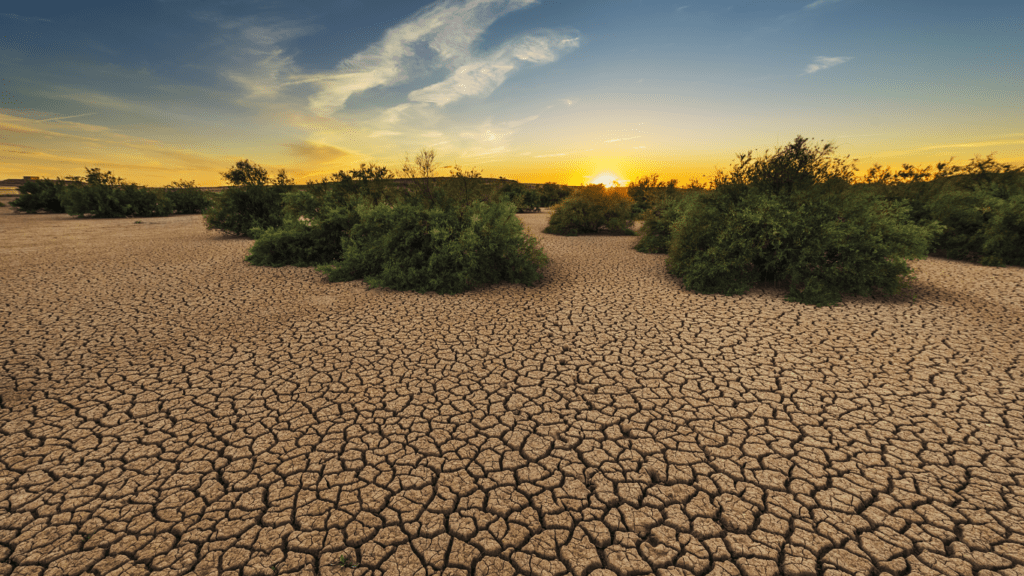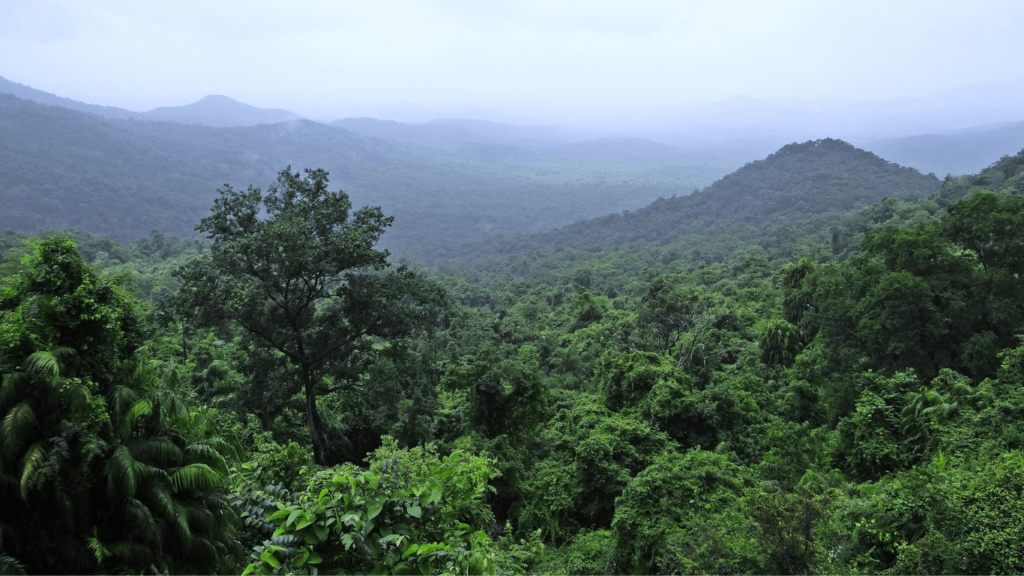Importance Of Forest Ecosystems
Forest ecosystems support biodiversity, stabilize the climate, and purify the air. They host numerous species like:
- birds
- insects
- mammals
Flora hotspots thrive here, contributing to genetic diversity and resilience against diseases. According to the World Wildlife Fund, around 80% of terrestrial animals and plants inhabit forests.
Forest ecosystems significantly influence global water cycles. Trees absorb rainfall and release water vapor, generating precipitation patterns. They regulate water flow and reduce flood risks. Wetlands formed by forest watersheds serve as habitats for aquatic species and provide clean water to downstream communities.
Carbon sequestration is another critical role. Forests absorb atmospheric CO2, combating climate change by reducing greenhouse gasses. According to the Food and Agriculture Organization, forests sequester about 2.6 billion metric tons of CO2 annually. Effective forest management can enhance carbon storage capabilities, contributing to climate mitigation efforts.
Local communities depend on forest resources. Forests offer timber, medicinal plants, and non-timber products. Indigenous people harvest forest products without degrading habitats, practicing sustainable land use. This relationship ensures both human welfare and ecosystem health.
Forest ecosystems maintain soil fertility and prevent erosion. Tree roots anchor soil, reducing landslides and nutrient loss. Leaf litter enriches soil organic matter, promoting plant growth. Healthy soils sustain agricultural productivity and forest regeneration.
Understanding and preserving forests is vital for biodiversity and human survival. By protecting these ecosystems, we ensure the continuity of species, maintain ecological balance, and support sustainable livelihoods. Actively engaging in conservation efforts can help safeguard these invaluable natural resources.
Components Of Forest Ecosystems
Forest ecosystems consist of various interconnected components, each playing a vital role in maintaining ecological balance and supporting biodiversity.
Flora Diversity
Flora diversity within forests includes trees, shrubs, herbs, and ferns, all contributing to the ecosystem’s health. Trees form the forest canopy, blocking sunlight and creating a unique microclimate. For example, in tropical rainforests, trees like mahogany and kapok reach great heights. Shrubs and smaller plants, such as azaleas and wildflowers, grow below the canopy, providing habitat and food for various insects and animals. Mosses and ferns, thriving in moist environments, cover the forest floor, aiding in soil retention and moisture regulation.
Fauna Diversity
Fauna diversity in forests encompasses a wide range of species, from insects to large mammals. Insects such as beetles and butterflies contribute to pollination and decomposition. Birds like toucans and woodpeckers play critical roles in seed dispersal and insect control. Mammals, including deer and jaguars in deciduous forests, find shelter and food within these ecosystems. Amphibians and reptiles, such as frogs and snakes, regulate insect populations and serve as prey for larger animals. Each species, forming part of the food web, ensures the ecosystem’s stability and resilience.
Ecological Functions
Forest ecosystems play several critical roles in maintaining the planet’s health, positively impacting climate, water cycles, and soil integrity.
Carbon Sequestration
Carbon sequestration involves forests absorbing and storing carbon dioxide from the atmosphere. Trees act as carbon sinks, capturing about 2.6 billion metric tons of CO2 annually. This process helps mitigate climate change and reduces greenhouse gas concentrations. Dead plant material and soil also store carbon, further enhancing forests’ capacity to balance atmospheric carbon levels.
Water Cycle Regulation
Forests significantly influence local and global water cycles. Trees release moisture into the air through transpiration, contributing to cloud formation and precipitation. Forests intercept rain, reducing surface runoff and promoting groundwater recharge. This regulation of water flow ensures a stable supply of fresh water for ecosystems and human use. Forests also decrease the risk of floods by slowing the movement of water through the landscape.
Soil Health
Healthy soils form in forest ecosystems due to the continuous input of organic matter from plant debris. Leaf litter and decomposing trees add nutrients to the soil, promoting fertility. Forest root systems stabilize soil, preventing erosion and maintaining structure. These actions ensure that soils remain productive and resistant to the pressures of agricultural expansion and climate change.
Threats To Forest Ecosystems

Forest ecosystems face several significant threats that undermine their biodiversity and ecological balance. Addressing these threats is crucial for preserving these vital natural resources.
Deforestation
Deforestation ranks as a primary threat to forest ecosystems. Each year, around 15 million hectares of forest are destroyed due to various factors. Logging operations remove valuable trees like mahogany and teak, leading to habitat loss for countless species. Agricultural expansion further exacerbates this issue; for instance, the conversion of forests into farmland for crops like soy and palm oil leads to large-scale deforestation. Additionally, urban development increases, shrinking forest areas and fragmenting habitats. These changes result in reduced biodiversity, altered water cycles, and increased carbon emissions.
Climate Change
- Climate change significantly impacts forest ecosystems.
- Rising temperatures and changing precipitation patterns stress plant and animal species.
- A notable example is the increased frequency and intensity of wildfires, which destroy vast tracts of forests annually.
- Pests and diseases thrive in warmer climates, threatening tree populations. For instance, mountain pine beetles have devastated millions of acres of pine forests across North America.
- Acid rain, driven by industrial emissions, also harms forests by depleting soil nutrients. These conditions disrupt forest health, reduce carbon sequestration capacity, and threaten biodiversity, highlighting the urgent need for conservation and climate action.
Conservation Strategies
Conserving forest ecosystems ensures their critical functions remain intact. Let’s explore specific strategies for protecting these vital environments.
Protected Areas
Designating protected areas effectively conserves forest biodiversity. National parks, wildlife reserves, and conservation easements prevent deforestation and habitat loss. Governments and organizations collaborate to establish these areas, preserving biodiversity hotspots and providing safe havens for endangered species.
Using protected areas, we create zones where human activities like logging and agriculture are restricted. Examples include the Amazon Rainforest National Parks and the Congo Basin reserves. These zones not only conserve species but also maintain ecosystem services like carbon sequestration and water regulation.
Sustainable Practices
Sustainable practices in forest management balance conservation with human needs. Implementing sustainable logging and agroforestry reduces the impact on natural habitats. Certification programs like FSC (Forest Stewardship Council) promote responsible forest management.
We can practice rotational farming, which allows land to recover, and selective logging, which protects canopy structure and biodiversity. Agroforestry integrates crops and trees, benefiting both agriculture and the environment. Examples include shade-grown coffee plantations, which support biodiversity while producing valuable crops. Additionally, community-based management empowers local populations to protect forests through traditional practices and conservation education.



 Mindfulness & Nature Wellness Specialist
Eve Macleod is a certified mindfulness and meditation instructor who has spent years cultivating her passion for connecting wellness practices with the natural world. At Whisper Forest Ways, Eve focuses on guiding readers through techniques that harness the power of nature to promote mental, emotional, and physical well-being. Specializing in forest bathing, nature-based meditation, and eco-therapy, Eve helps readers discover how nature can enhance mindfulness practices and deepen relaxation. She believes that the natural world holds untapped potential for personal healing, stress relief, and spiritual growth, and through her articles and tutorials, she invites everyone to embark on a journey toward a more peaceful and centered life.
Mindfulness & Nature Wellness Specialist
Eve Macleod is a certified mindfulness and meditation instructor who has spent years cultivating her passion for connecting wellness practices with the natural world. At Whisper Forest Ways, Eve focuses on guiding readers through techniques that harness the power of nature to promote mental, emotional, and physical well-being. Specializing in forest bathing, nature-based meditation, and eco-therapy, Eve helps readers discover how nature can enhance mindfulness practices and deepen relaxation. She believes that the natural world holds untapped potential for personal healing, stress relief, and spiritual growth, and through her articles and tutorials, she invites everyone to embark on a journey toward a more peaceful and centered life.
